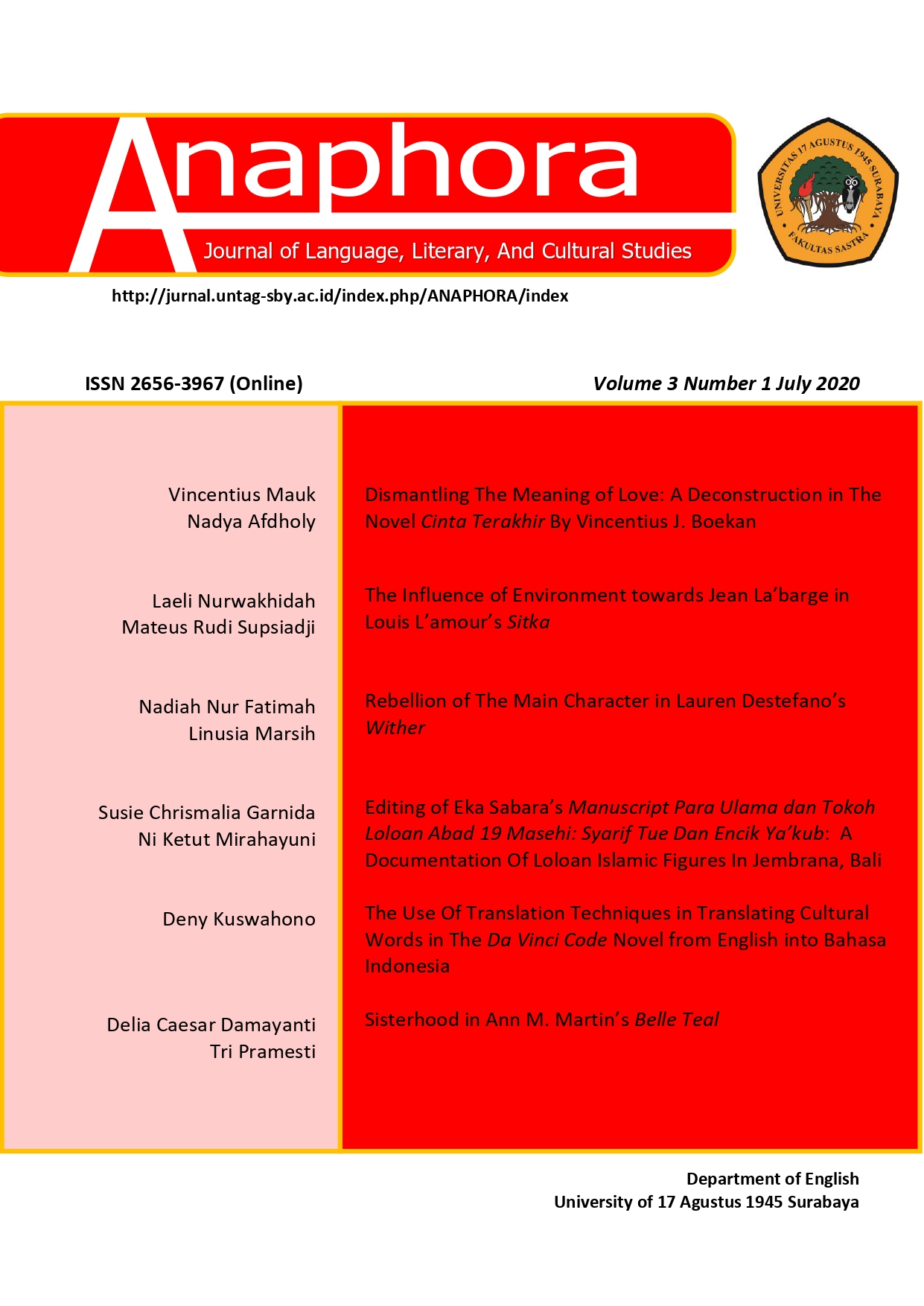REBELLION OF MAIN CHARACTER IN LAUREN DESTEFANO’S WITHER
DOI:
https://doi.org/10.30996/anaphora.v3i1.3546Keywords:
rebellion, dystopian-lifeAbstract
This study aims to reveal rebellion of main character in Lauren DeStefano’s Wither. The discussion is focused on Rhine’s rebellion which is trigerred by dystopian-life happened in the society. In revealing the rebellion reflected in the novel, Mercuse’s theory of rebellion and Millner’s theory of dystopian-life are applied. The research method applied in this study is descriptive qualitative with intrinsic and extrinsic approaches. Based on the analysis, the writer finds out that among the nine dystopian society characteristics, the writer has found five characteristics that are reflected in Wither, namely the society is an illusion of utopia world; the natural world is being a banished and distrusted world; perception under constant surveillance; fear ot the outside world; and information, independent thought, and freedom are restricted. In addition, the analysis of the main character’s rebellion shows that the rebellion happens as the impact of dystopian society faced by the main character. Rhine’s rebellion is done in four ways – having intention to escape from Linden’s house, refusing to be consummated by her husband, having relationship with Gabriel, and escaping. The reasons of Rhine’s rebellion are wanting to be reunited with her brother and wanting to have freedom. After doing the analysis, the writer finds out that science and technology should be developed for human’s better condition. Science and technology must not be expected beyond God’s power. When science and technology is developed without consideration in terms of humanity, it will result in chaosness.Downloads
References
Abdullah, S. (1987). Study Implementasi Latar Belakang Konsep Pendekatan dan relevansinya dalam Pembangunan. Ujung Pandang: Persadi.
Anderson, J. E. (1979). Public Policy Making. New York: Holt, Rinehart, and Winston.
Downloads
Published
How to Cite
Issue
Section
License
Authors whose manuscript is published will approve the following provisions:
-
The right to publication of all journal material published on the jurnal anaphora website is held by the editorial board with the author's knowledge (moral rights remain the property of the author).
-
The formal legal provisions for access to digital articles of this electronic journal are subject to the terms of the Creative Commons Attribution-ShareAlike (CC BY-SA) license, which means Jurnal Persona reserves the right to store, modify the format, administer in database, maintain and publish articles without requesting permission from the Author as long as it keeps the Author's name as the owner of Copyright.
-
Printed and electronic published manuscripts are open access for educational, research and library purposes. In addition to these objectives, the editorial board shall not be liable for violations of copyright law.















